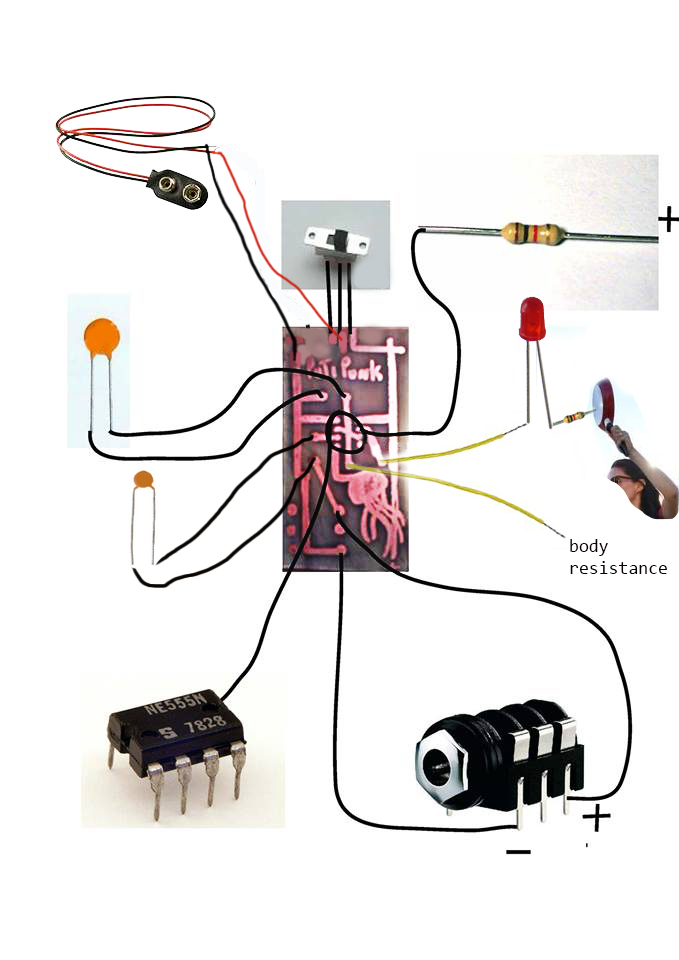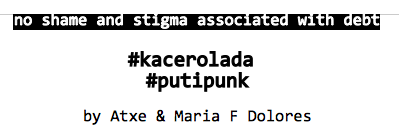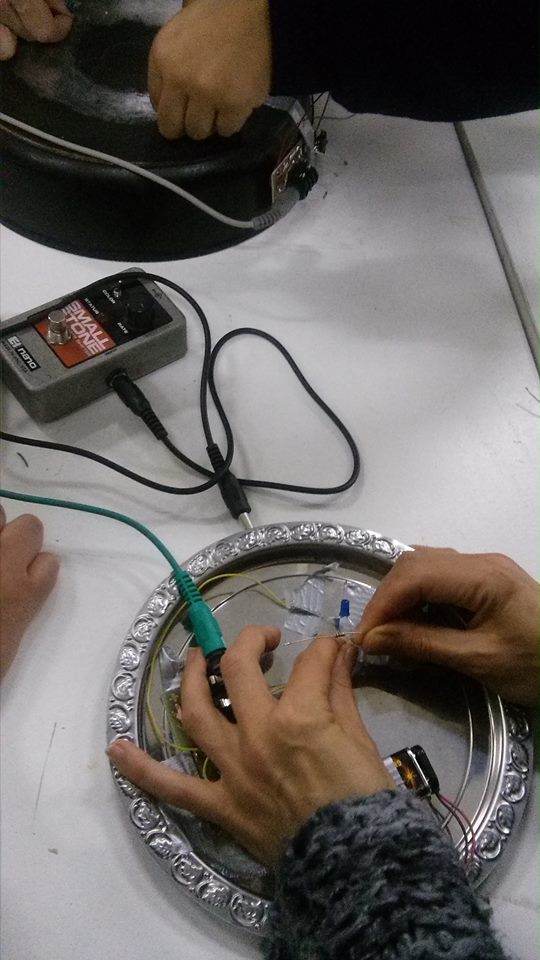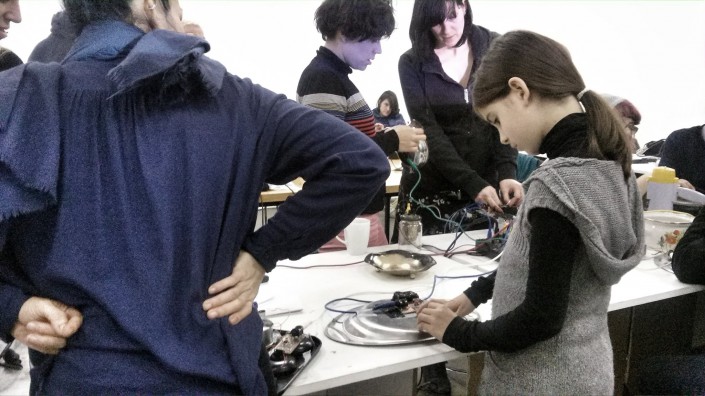
kacerolada Putipunk is based on an integrated circuit (chip) called 555 Timer ic
The 555 timer IC was first introduced around 1971
as the SE555/NE555 and was called
"The IC Time Machine" by the Signetics Corporation
who profited a lot by it when at the sixties, war and survelience market made a decision to begin a shift towards microelectronics and ICs, due to their small size, higher reliability, and lower power consumption.
is used in a variety as timer, pulse generator, and oscillator applications.
555 is still in widespread use, due to its ease of use, low price, and stability.
Used to be the very first and only commercial timer ic available.
#What is occuring at the kacerolada Putipunk circuit?
555 has a discharge, a trigger, an output and a threshold between other others.
Steps to follow:
We located a capacitor between the pin 6, threshold and the ground (-)
Usually we could locate a potenciometer between the pin 6 (threshold) and the the pin 7 (discharge) to.., but in our case we didnt.
We connect the 7 (discharge) to the 8 (voltage + )with 1k resistance
and the trigger (pin 2) with the threshold (pin 6)
the discharge 7 to the 8 (voltage +) with 1k Resistance
this allows the following actions:
pin 8 (voltage) gathers the positive energy of the battery and carries it in dosage at pin 6 (thershold) dependind on the capasitor.
When the threshold receives 1/3 of the voltage activates the discharge (pin 7) that follows to a trigger which releases energy to the output (pin 3) transformed on sound or light (led) for this action to be repeated we have to connect the reset (pin 4) at the voltage pin 8 (+) so as to creat a loop. The determined frecuency of the loop is regulated by the size of resistance that we apply to it, counted in Microfarads (μ F)
Funny and evil coincedence the treshold is allways triggered at 0.666 μ F (the number of the beast :P)
#The 555 has three operating modes: Monostable , Astable , Bistable
Kacerolada putipunk is an astable circuit
#free-running mode #oscillator
In astable mode, the 555 timer puts out a continuous stream of rectangular pulses having a specified frequency. To modify the frecuency we have to apply the following formulas:
In the astable mode, the frequency of the pulse stream depends on the values of R1, R2 and C:
The high time of signal from each pulse is given by:
HT = 0.693 * (R1+R2) * C1
and the low time:
LT = 0.693 * (R2*C1)
Both LT and HT depend of the values of the Resistances.
R1 = pot/cacerola/kacerola)
R2 = our body/ bodies
The presence of the diode is a voltage drop that slows charging on the capacitor so that the high time is longer than the expected.
The frequency of the output signal ranges iis given by the formula:
f = 1/(0.693 * C1 * (R1 + 2 * R2)

workshop at Cacerolazo #CrisisRus "NETWORK | RE:WORK"
creation and design of kacerolado putipunk
by Atxe and Maria F dolores
at Alpha nova-kulturwerkstatt & Galerie futura
Am Flutgraben 3 , 12435 Berlin
LaptopsRus in collaboration with reboot.fm presents the 4th edition of CrisisRus with workshops and performance at Alpha nova-kulturwerkstatt & Galerie futura in Berlin on October 25, 2014.
LaptopsRus is a self-organized open-participatory platform engaged in networking woman live performers. Prompted by the prolonging economic crisis as manifested in global Cacerolazo (dubbed global noise) where protesters bang on pots and pans while marching, we launched CrisisRus "NETWORK | RE:WORK" bringing together woman performers, homemakers, nomads, artists, activists to manifest woman work force and resilient capacity in these time of personal, political and economical crisis.
Alpha nova-kulturwerkstatt & galerie promotes the interaction of artistic, theoretical and political practices with an explicit gender-critical perspective. As part of CrisisRus' workshop sessions and performance, we hold an informal round-table discussion (to be recorded) on relating the experiences and the coping with crises. Teaming up with Berlin-based free art radio, reboot.fm, crisisRus holds workshops on making DIY electronics and miniFM transmitters. Bring your defunct pots and pans, your soldering irons, your boomboxes, we provide parts and wires for electronic modification. Through mutual learning and teaching, we turn pots and pans into electro-noisemaking apparatus. The miniFM radio workshop demonstrates the possibilities of signaling crisis by short-range radio transmission. These workshops are free of charge. You get to take home your own DIY/DIWO devices.
The Workshop participants are encouraged to take part in the evening performance where we bring together sonic amplification, video documents and recorded conversation on crises and strategies for a grand electro Cacerolazo. The audience are invited to voice their own views with pots, pans and via megaphones. The live performance will be streamed live on reboot.fm
We invite remote participation - to upload crisis banners and videos
crisisrus.laptopsrus.me
laptopsrus.me
with Maite Cajaraville,_Shu Lea Cheang &_Lucía Egaña Rojas
reboot.fm
with Diana McCarty
alpha-nova-kulturwerkstatt.de
with Anne Kohl & Katharina Koch




https://soundcloud.com/rebootfm/laptopsrus
kit recipe:
1 555 chip
2 capacitors 068MF
2 resistances1K
1 jack stereo input with 6 solder pins
9 Volt battery clip
1 led violet
1 switch of 2 pins
1 8
2 7
3 6
4 5